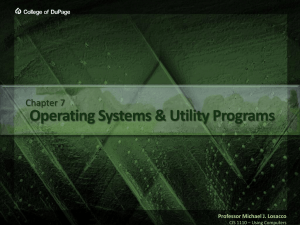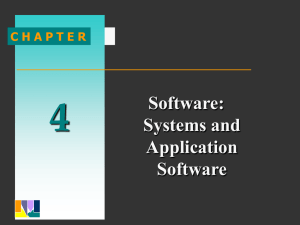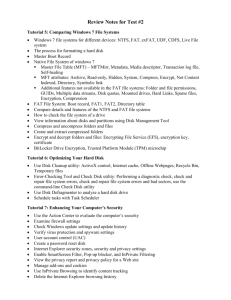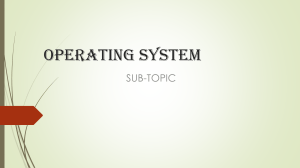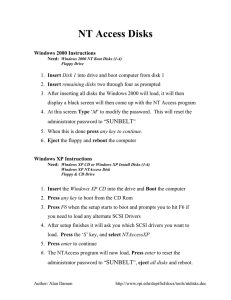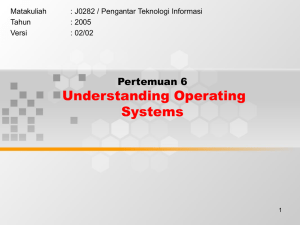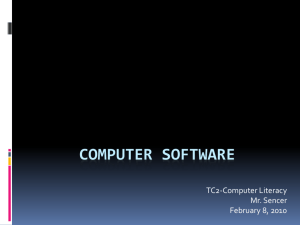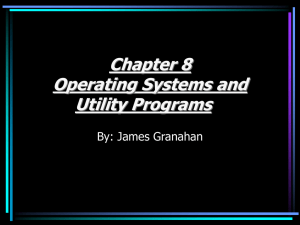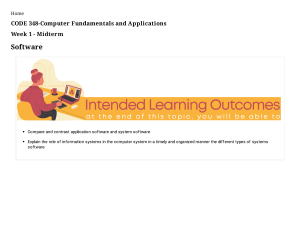Outline
advertisement
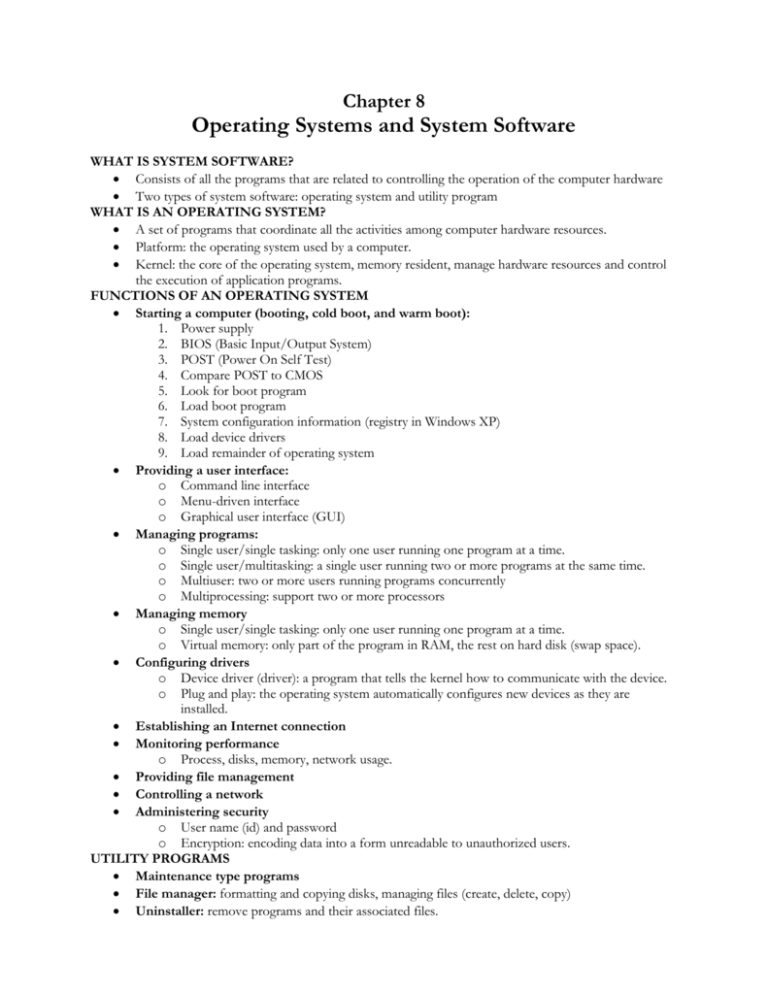
Chapter 8 Operating Systems and System Software WHAT IS SYSTEM SOFTWARE? Consists of all the programs that are related to controlling the operation of the computer hardware Two types of system software: operating system and utility program WHAT IS AN OPERATING SYSTEM? A set of programs that coordinate all the activities among computer hardware resources. Platform: the operating system used by a computer. Kernel: the core of the operating system, memory resident, manage hardware resources and control the execution of application programs. FUNCTIONS OF AN OPERATING SYSTEM Starting a computer (booting, cold boot, and warm boot): 1. Power supply 2. BIOS (Basic Input/Output System) 3. POST (Power On Self Test) 4. Compare POST to CMOS 5. Look for boot program 6. Load boot program 7. System configuration information (registry in Windows XP) 8. Load device drivers 9. Load remainder of operating system Providing a user interface: o Command line interface o Menu-driven interface o Graphical user interface (GUI) Managing programs: o Single user/single tasking: only one user running one program at a time. o Single user/multitasking: a single user running two or more programs at the same time. o Multiuser: two or more users running programs concurrently o Multiprocessing: support two or more processors Managing memory o Single user/single tasking: only one user running one program at a time. o Virtual memory: only part of the program in RAM, the rest on hard disk (swap space). Configuring drivers o Device driver (driver): a program that tells the kernel how to communicate with the device. o Plug and play: the operating system automatically configures new devices as they are installed. Establishing an Internet connection Monitoring performance o Process, disks, memory, network usage. Providing file management Controlling a network Administering security o User name (id) and password o Encryption: encoding data into a form unreadable to unauthorized users. UTILITY PROGRAMS Maintenance type programs File manager: formatting and copying disks, managing files (create, delete, copy) Uninstaller: remove programs and their associated files. Disk Scanner: detect and correct disk problems, and remove unnecessary files. Disk defragmenter: reorganize clusters for efficient disk access. Diagnostic utility: detect and correct hardware and software problems POPULAR OPERATING SYSTEMS MS-DOS (Microsoft) Windows 97/2000/XP: GUI operating system for PCs Mac OS X: multitasking operating system for Macintoshes OS/2: IBM’s GUI operating system UNIX: multi-user, multitasking operating system Linux: open source software Netware: network operating system Windows Server 2003 Windows CE .Net, Packet PC 2002, Palm OS, Symbian OS for PDA’s STAND-ALONE UTILITY PROGRAMS Antivirus programs: identify and remove viruses found in memory, storage media, on incoming files. Personal firewalls: detects and protects a PS from unauthorized access. File compression: shrink the size of a file by compressing data.

